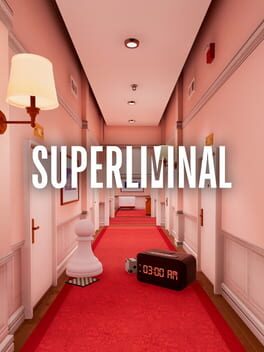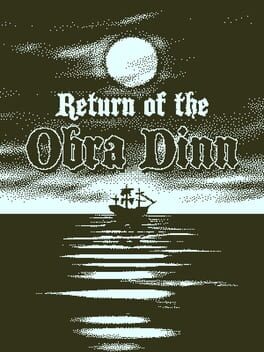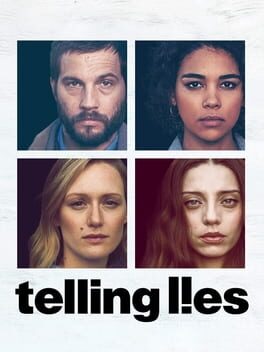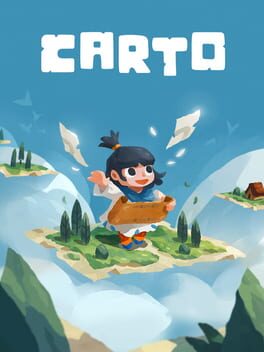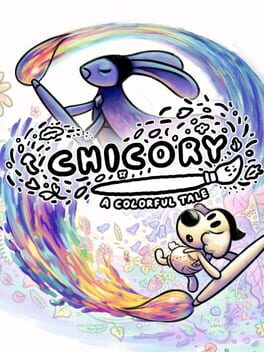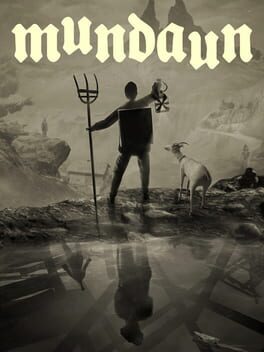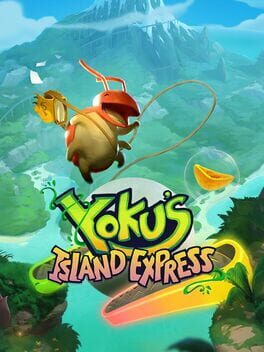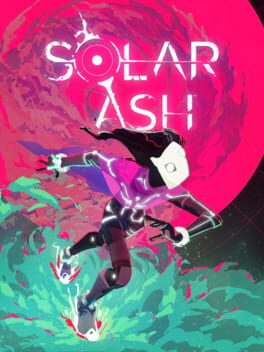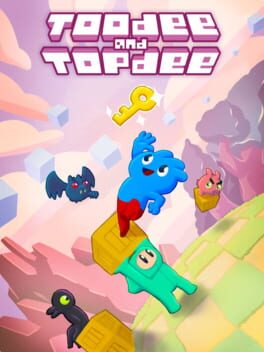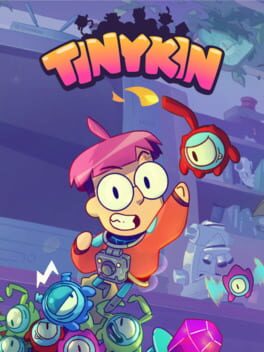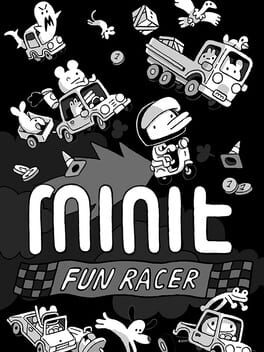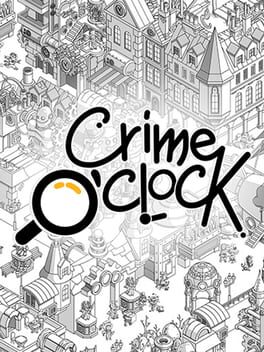tim_theuknown
BACKER
59 Reviews liked by tim_theuknown
Superliminal
2019
“Captain! Open the door…”
“Kick it in!”
“…lest we break it down… and take more than those shells.”
“You bastards may take… exactly what I give you!”
With that opening gunshot, I knew I had stumbled upon something truly great.
How is it that after over 30 years of adventure games, Return of the Obra Dinn nailed the formula and continues to this day to be the definitive detective mystery game? It’s actually deceptively simple; while its predecessors were often games built around mysteries, Return of the Obra Dinn is a mystery built around a game.
You see, most detective-mystery games attempt to adhere to reality, or at least some form of fictionalized reality. Investigators stumble upon the crime scene, sweep the crime scene to collect evidence, analyze the evidence in a lab, interrogate witnesses, and then arrest suspects. In other words, it’s your usual CSI drama-like that does its best to recontextualize real life crime fighting techniques into video game mechanics, and this can lead to a slew of difficulties and frustrations on the player’s end, such as being railroaded from case to case, brute forcing solutions from an already provided answer bank, and transforming complicated logical reasoning and deduction into what is more or less a streamlined experience that consists of answering several simple multiple choice questions.
Return of the Obra Dinn doesn’t do any of that.
The year is 1807, and the Obra Dinn has just mysteriously drifted back into port after being declared lost at sea five years ago. You are an insurance agent, woken up on an otherwise uneventful morning to piece together everything that’s happened to the 60 lost souls of the Obra Dinn and determine the damages to charge whoever is held responsible for this whole mess. You’ve been sent a mostly empty volume titled Return of the Obra Dinn: A Catalogue of Adventure and Tragedy as well as a mysterious pocket watch named the “Memento Mortem.” There’s no one left on the ghost ship to arrest or interrogate, and the crime scene is years old by now; it’s just you, armed with a magical timepiece, left to your own devices to fill out as much of this tragic and inky tale as you so desire.
Obra Dinn keeps the questions simple: who is whom, and how did they die? Because the questions are the same for all fates, the game doesn’t lead you down any obvious lines of reasoning. Furthermore, there are tons of potential answers for each of the two main questions: you have every name from the ship’s manifest to insert as a potential identity, and a slew of verbs that could be inserted for a death, ranging from the classics “Clubbed” and “Shot” to the more out there “Poisoned” and “Eaten.” That’s right, you can write in cannibalism as a cause of death on the Obra Dinn.
As the insurance adjuster, you use the Memento Mortem to travel back to the exact time of crisis; it is aptly named “Remember Death” for a reason. You’ll often get a few seconds of audio leading right up to the moment of death, and then you’re immediately transported to the exact frozen moment in time, like a still diorama of doom, where you can examine the minute details in-person. As mentioned before, the book gives you little guidance regarding exact fates and identities, and it’s up to you to draw the connections. Lucas Pope pulls out every trick in the book: accents, nationalities, clothing, occupations, tools, items of personage, who they’re often around, even the continuity of the narrative itself. It’s pure deductive reasoning with little to no hand-holding; you’ll often have to find specific clues from one scene and tie it back to characters in a completely different scene, and not only spotting the minute details, but linking them together, is crucial to determining the fate of all 60 souls.
Let me take this time to just say it; Obra Dinn slays in presentation. The sound design is immaculate; the voice acting perfectly captures the tone and emotions across the entire cast, much less capturing their nationalities and speech patterns, and often thrown into the mix are a cornucopia of sound effects from squeaking, slashing, the sloshing of waves and the whistling of wind, and various cries of pain, anguish, and despair. The soundtrack (also composed by Lucas Pope) accentuates these moments too. I’ll never forget the clanging bells from Soldiers of the Sea signifying an approaching calamity, or the ominous wind instrumental melody from A Bitter Cold hinting at a lurking danger, and especially the abrupt baritone horns of The Doom alerting the player that shit just got real. Finally, who could forget the iconic 1-bit art style of the game, a “dither-punk” stylistic choice that inspired many classic Macintosh-esque graphics for games to come? Not only does it serve the practical purpose of letting Pope illuminate exactly what details he wants to highlight (mainly, the expressive faces of the passengers and crew of the Obra Dinn, as well as their colorful belongings set in scenes of harrowing jeopardy) while giving him room to leave out other extraneous details, including an almost lack of text outside of the book, it plays extremely well to the lean of a gothic and macabre tale of a ship lost at sea.
An understated but nevertheless crucial strength of this game to aid the brilliant presentation is that Lucas Pope understands how to use volume swells. To elaborate upon this, think about how much of popular music has learned to emphasize loud-soft dynamics in songwriting; the softer the build-up, the louder the climax becomes. A good example of this in classic video games is in Shadow of the Colossus, where Wander’s trek to each colossi is accompanied by practical silence with the exception of environmental noises and Agro’s hooves, leading to an anticipation track when Wander first stumbles upon the Colossi and then exploding into an epic battle track as he scales upon the Colossi’s body.
Obra Dinn has another fantastic translation of this idea; in the “present-day” overworld upon the ghost ship, all you hear is the call of the sea and the creaking of the ship’s planks. As soon as you find a body, the stopwatch pops open, plays a quick string melody as you spiral into the memory, and the few seconds of audio as a build-up to the time of death play out until the grisly, painted scene of death suddenly appears with the abrupt accompaniment of horns, strings, and bells. These scenes never outstay their welcome either; for the first time you stumble upon each new diorama, the player spends 60 seconds in the memory taking in all the new details, until the game fades out, pulls you into the book to form the outline, and then either opens a door in the distance so you can continue your search or leads you to the next body contained within a death diorama to find the next tragic happening. Certainly, it’s a pleasant and welcome surprise from so many games that just play the same droning background music over and over while players are performing the “same” task of investigating or working all the logic out.
Going back to the mechanics of Return of the Obra Dinn, there’s a degree of player control that I think is simply not present in other detective games. I’ve already mentioned that the game doesn’t hold your hand when it comes to figuring out fates and identities, but this increased player control is also due to the structure of the game itself. After solving a few of the opening fates, and opening new doors thanks to open doors within the memories themselves, you’re more or less free to explore around the Obra Dinn as you please and tackle whatever memories you want in whichever order you desire. In fact, the game’s reliance upon this often disconnected narrative via traveling back and forth through different memories is critical to working out the timing of the game’s events and forming the connections necessary to deduce whom is present at what time, ultimately leading to their respective demises. It’s also a nice-built in feature that you don’t even need to solve every fate to end the game; you can step off the Obra Dinn and head back home at any time if you ever get fed up. That said, the insurance report at the end of the game does vary depending on how you marked fates along your investigation, which means there is an incentive to actually try and perform your damn duty.
To add on to the above, Obra Dinn has several nods to player perspective and player agency that elevate this far above any other detective game I’ve ever played. Lucas Pope has mentioned previously in interviews about this degree of ambiguity that exists in detective work; multiple people can look at the same scene, but come away with different conclusions based off of the different clues that they notice and the different ways that their brain works out the logic and reasoning. Pope wanted to implement this into the game mechanics as well, and included some degree of leeway when it comes to putting down certain fates. Because many passengers and crew die off screen in the game (and in fact their bodies are often lost between the scenes of death and cannot be recreated for one reason or another), and because figuring out every exact fate of 60 souls is quite challenging, players often have to rely on educated guesses and process of elimination to figure out how everything exactly went down. Thus, Pope decided to allow multiple “acceptable” answers for certain circumstances because honestly, who’s he to say that this player’s interpretation is more correct than the other?
Even more viscerally shocking to me is that the game is innately aware of who you are and what role you play, and has multiple nods to this throughout the game. I can’t go into too much detail since that would quickly enter spoiler territory, but needless to say, your actions do have consequences upon the final findings and ending of the frame tale (both in the form of the insurance report and what’s revealed to you thereafter), and the game is extremely self-aware of how omnipresent death plays a role in your investigation and how without it, your perception of events would be much different. I also at this time want to point out that Lucas Pope puts a lot of emphasis in toolkits, particularly calling back to his time spent at Naughty Dog developing GUI tools. Pope then proceeds to both play this emphasis straight and subvert this at times; sure, the book is great at marking down the exact location of bodies, but what happens when the bodies can’t be recovered? It’s extremely helpful to zoom in on people within the frozen memories and then press Tab to immediately lock in on their location within the sketch, but what do you do when the person is so far away in the background of the memory that zooming in doesn’t lock onto that identity? By doing this, Pope utilizes the presence of the built-in tools to their maximum capacity, through both forcing reliance upon the tools and reliance upon other means of discovery when the tools are subverted.
Lastly, I’ve been trying to figure out exactly what makes Obra Dinn a goldmine for so many memorable moments. I’ve already discussed the presentation and the strong presence of player control/perspective/agency that only a video game could really accomplish, but there’s two additional reasons I want to walk through at this time. Firstly, Obra Dinn’s anachronistic narrative sets it up for success in a few ways. Of course, there’s the degree of player control that this allows, thanks to letting players walk through most memories however they wish. We’ve also discussed the presence of continuity serving as a usable clue itself; that is, if a character is dead in a prior scene, then chronologically, that identity should not be present later on, and so on so forth. However, we haven’t talked about the power that disjointed story-telling has narratively, in that twists and sudden shifts in plot development feel much more natural and built-in.
To further elaborate, let's consider the cold opening of this game, where a few men bang on the captain’s door before one is unceremoniously shot in cold blood. This scene does several important things; firstly, it’s a sharp contrast from the peaceful and quiet beginning as you obtain your magical pocketwatch and stumble upon the rotting and decaying bones of the “first” victim, and in doing so, it immediately grabs your attention. Secondly, it introduces a flurry of new characters and terms in the form of “MacGuffins” that are most certainly relevant and just known to the cast at this point, but to an outsider like you, won’t make any sense at all. Think of it like a reverse Chekhov’s Gun; it’s mentioned in passing often at the chronological end (after all, the timing of deaths within death scenes means you’ll generally be traveling backwards) and its relevance has already been established, so you don’t have to wonder about whether or not it’s important. In fact, it provides a degree of investment to figure out exactly what it means and how it all played out. Finally, these scenes often take place in altered environments (i.e. what the Obra Dinn looked like 5 years ago) and slowly introduce and naturally funnel you towards more and more death as events unfold, with unlocked doors and recently deceased bodies giving you further access to more parts of the ship and more memories. By doing so, there’s an actual sense of progression alongside the sense of satisfaction from filling out the outlined narrative.
Speaking of progression and satisfaction, that brings us to the last additional reason, namely via investment. The game’s lack of hand-holding and overall difficulty are a huge reason why, as well as the focus on personal growth versus systems growth; the systems and mechanics present at the beginning of the game are the exact same as those at the end of the game, and the only thing that has evolved is the player’s knowledge of the fates and workings of the ship. Heavily aiding to both the player’s growth and the difficulty of the game is the “rule of three” mechanic used to validate fates. It strikes a certain balance; Pope wanted a mechanic that would put the player at ease for successfully figuring something out (i.e. not letting the aforementioned ambiguity rule over the whole process) but at the same time, not be so simple as to allow for the game to railroad players into certain choices or obvious brute-forcing. As such, the player must correctly fill out three sets of identities and fates before the book makes these choices permanent and congratulates the player upon their work. The “Eureka!” moments garnered from this system from correctly deducing the story are just as important to me as the “Holy shit!” moments that I experienced from the story unfolding itself. Is it a perfect system? Of course not; you could argue that the mechanic can be abused if you’re very sure about two particular fates and not so sure about the third to allow for more guesswork, and that the mechanic is “contrived” like much of this game. Nevertheless, I appreciate that this margin of error exists as a concession to the player and a good in-between for rewarding players with self-satisfaction while providing an adequate challenge despite providing more than adequate tools to meet the challenge.
A few closing thoughts: for years, many players and developers have pointed out that there’s a glaring dissociation between game mechanics and narrative. That is, we tend to view game mechanics and narratives as separate, and in fact in many cases, mutually exclusive. That’s why in many longer games, you’ll often have chunks of extended gameplay in the form of combat or puzzles, and then chunks of extended storytelling, often in the form of cutscenes, dialogue, text boxes, etc. This works just fine for longer run-times in the span of 20 - 100+ hours, but it would absolutely ruin the pacing of shorter games to switch players back and forth between exclusive gameplay and exclusive storytelling, and smaller indie studios often don’t have the budget or resources to maximize these aspects separately.
I’ve been searching for many examples of games where gameplay and storytelling are married effectively, and there’s a few that come to my mind such as Journey, Ghost Trick, Shadow of the Colossus, Outer Wilds, and so on so forth. Needless to say, I’m both embarrassed and happy to report that one of the greatest examples has been right under my nose the entire time. There’s no separation between Return of the Obra Dinn’s gameplay and narrative, and at no point is there exclusive storytelling or exclusive gameplay. Simply put, interaction with the narrative is the gameplay.
All of the previous points come back into play. The personal growth is learning more about the story. The logic and deductive reasoning into figuring out identities and fates are the core gameplay mechanics. The focus on eerie and often grotesque visuals and expressive sound effects and voice acting are integral to piecing together the Obra Dinn’s story. The very presence of death throughout the narrative is the only thing allowing you to even solve these fates in the first place, because without the Memento Mortem as a game mechanic allowing you to travel back to the exact time of death, you’d just be some insurance adjuster who walked onto an empty ship, saw a locked door and flies swarming around a pile of bones, and walk straight back to the rowboat to fabricate at best, a creepypasta of how 60 people were mysteriously lost at sea. Gameplay and story are inexorably intertwined, and one aspect would cease to exist or be severely crippled without the other half.
Time to address the elephant in the room: for a story-heavy game, is the story exceptional? I wouldn’t necessarily say so, as if I were to compare this to exceptional works of fiction in other mediums (say, a book like Moby Dick), I’d say that Obra Dinn’s details aren’t quite as elaborate nor as fanciful.
But Return of the Obra Dinn isn’t trying to be a book, or a movie, or even a museum installation. It’s trying to be a video game, and it embraces the strengths of the interactive medium so well that I honestly couldn’t care if the story isn’t as ambitious or beautifully scripted and its prose doesn’t match with even contemporary acclaimed writers. Frankly speaking, Return of the Obra Dinn doesn't just elevate the bar for detective games, it blows the bar off the rail and becomes something much more. I’ve been playing through a few other detective games recently, and none of them even came close to holding a candle to the grandmaster itself. That, and a lot of free time (and maybe a bit of nostalgia and passion) led me to reference a few analysis and interview videos and type this all up in an afternoon or so. It'll all make sense soon, but just know this: the narrative might not necessarily be exceptional, but I’d damn well say that this narrative is exceptionally told.
My one video gaming regret is that I will never be able to experience this again for the first time. As a result, I have resorted to recommending this to virtually everyone I know with no reservations and buying my friends copies of Return of the Obra Dinn so I can be there when they too, experience the frustrations and satisfactions of the medium in its rawest form for the first time. I really don’t know what else to say; I’ll vouch for this game in every waking moment of my life, and at this point, I'm convinced that I’ll probably buy anything Lucas Pope makes day one with no exceptions. If you want a game that will challenge your perception of what video games can be and accomplish, I don’t think you can do much better than this.
Sources referenced:
Return of the Obra Dinn Thinks Differently About Narrative
How Return of the Obra Dinn Works
How Return of the Obra Dinn Makes You An Honest Detective
Rumination Analysis on Return of the Obra Dinn
Lucas Pope on 3 years of Return of the Obra Dinn, and what's next
Noclip Podcast #07 - Lucas Pope
Return of the Obra Dinn Steam Page
“Kick it in!”
“…lest we break it down… and take more than those shells.”
“You bastards may take… exactly what I give you!”
With that opening gunshot, I knew I had stumbled upon something truly great.
How is it that after over 30 years of adventure games, Return of the Obra Dinn nailed the formula and continues to this day to be the definitive detective mystery game? It’s actually deceptively simple; while its predecessors were often games built around mysteries, Return of the Obra Dinn is a mystery built around a game.
You see, most detective-mystery games attempt to adhere to reality, or at least some form of fictionalized reality. Investigators stumble upon the crime scene, sweep the crime scene to collect evidence, analyze the evidence in a lab, interrogate witnesses, and then arrest suspects. In other words, it’s your usual CSI drama-like that does its best to recontextualize real life crime fighting techniques into video game mechanics, and this can lead to a slew of difficulties and frustrations on the player’s end, such as being railroaded from case to case, brute forcing solutions from an already provided answer bank, and transforming complicated logical reasoning and deduction into what is more or less a streamlined experience that consists of answering several simple multiple choice questions.
Return of the Obra Dinn doesn’t do any of that.
The year is 1807, and the Obra Dinn has just mysteriously drifted back into port after being declared lost at sea five years ago. You are an insurance agent, woken up on an otherwise uneventful morning to piece together everything that’s happened to the 60 lost souls of the Obra Dinn and determine the damages to charge whoever is held responsible for this whole mess. You’ve been sent a mostly empty volume titled Return of the Obra Dinn: A Catalogue of Adventure and Tragedy as well as a mysterious pocket watch named the “Memento Mortem.” There’s no one left on the ghost ship to arrest or interrogate, and the crime scene is years old by now; it’s just you, armed with a magical timepiece, left to your own devices to fill out as much of this tragic and inky tale as you so desire.
Obra Dinn keeps the questions simple: who is whom, and how did they die? Because the questions are the same for all fates, the game doesn’t lead you down any obvious lines of reasoning. Furthermore, there are tons of potential answers for each of the two main questions: you have every name from the ship’s manifest to insert as a potential identity, and a slew of verbs that could be inserted for a death, ranging from the classics “Clubbed” and “Shot” to the more out there “Poisoned” and “Eaten.” That’s right, you can write in cannibalism as a cause of death on the Obra Dinn.
As the insurance adjuster, you use the Memento Mortem to travel back to the exact time of crisis; it is aptly named “Remember Death” for a reason. You’ll often get a few seconds of audio leading right up to the moment of death, and then you’re immediately transported to the exact frozen moment in time, like a still diorama of doom, where you can examine the minute details in-person. As mentioned before, the book gives you little guidance regarding exact fates and identities, and it’s up to you to draw the connections. Lucas Pope pulls out every trick in the book: accents, nationalities, clothing, occupations, tools, items of personage, who they’re often around, even the continuity of the narrative itself. It’s pure deductive reasoning with little to no hand-holding; you’ll often have to find specific clues from one scene and tie it back to characters in a completely different scene, and not only spotting the minute details, but linking them together, is crucial to determining the fate of all 60 souls.
Let me take this time to just say it; Obra Dinn slays in presentation. The sound design is immaculate; the voice acting perfectly captures the tone and emotions across the entire cast, much less capturing their nationalities and speech patterns, and often thrown into the mix are a cornucopia of sound effects from squeaking, slashing, the sloshing of waves and the whistling of wind, and various cries of pain, anguish, and despair. The soundtrack (also composed by Lucas Pope) accentuates these moments too. I’ll never forget the clanging bells from Soldiers of the Sea signifying an approaching calamity, or the ominous wind instrumental melody from A Bitter Cold hinting at a lurking danger, and especially the abrupt baritone horns of The Doom alerting the player that shit just got real. Finally, who could forget the iconic 1-bit art style of the game, a “dither-punk” stylistic choice that inspired many classic Macintosh-esque graphics for games to come? Not only does it serve the practical purpose of letting Pope illuminate exactly what details he wants to highlight (mainly, the expressive faces of the passengers and crew of the Obra Dinn, as well as their colorful belongings set in scenes of harrowing jeopardy) while giving him room to leave out other extraneous details, including an almost lack of text outside of the book, it plays extremely well to the lean of a gothic and macabre tale of a ship lost at sea.
An understated but nevertheless crucial strength of this game to aid the brilliant presentation is that Lucas Pope understands how to use volume swells. To elaborate upon this, think about how much of popular music has learned to emphasize loud-soft dynamics in songwriting; the softer the build-up, the louder the climax becomes. A good example of this in classic video games is in Shadow of the Colossus, where Wander’s trek to each colossi is accompanied by practical silence with the exception of environmental noises and Agro’s hooves, leading to an anticipation track when Wander first stumbles upon the Colossi and then exploding into an epic battle track as he scales upon the Colossi’s body.
Obra Dinn has another fantastic translation of this idea; in the “present-day” overworld upon the ghost ship, all you hear is the call of the sea and the creaking of the ship’s planks. As soon as you find a body, the stopwatch pops open, plays a quick string melody as you spiral into the memory, and the few seconds of audio as a build-up to the time of death play out until the grisly, painted scene of death suddenly appears with the abrupt accompaniment of horns, strings, and bells. These scenes never outstay their welcome either; for the first time you stumble upon each new diorama, the player spends 60 seconds in the memory taking in all the new details, until the game fades out, pulls you into the book to form the outline, and then either opens a door in the distance so you can continue your search or leads you to the next body contained within a death diorama to find the next tragic happening. Certainly, it’s a pleasant and welcome surprise from so many games that just play the same droning background music over and over while players are performing the “same” task of investigating or working all the logic out.
Going back to the mechanics of Return of the Obra Dinn, there’s a degree of player control that I think is simply not present in other detective games. I’ve already mentioned that the game doesn’t hold your hand when it comes to figuring out fates and identities, but this increased player control is also due to the structure of the game itself. After solving a few of the opening fates, and opening new doors thanks to open doors within the memories themselves, you’re more or less free to explore around the Obra Dinn as you please and tackle whatever memories you want in whichever order you desire. In fact, the game’s reliance upon this often disconnected narrative via traveling back and forth through different memories is critical to working out the timing of the game’s events and forming the connections necessary to deduce whom is present at what time, ultimately leading to their respective demises. It’s also a nice-built in feature that you don’t even need to solve every fate to end the game; you can step off the Obra Dinn and head back home at any time if you ever get fed up. That said, the insurance report at the end of the game does vary depending on how you marked fates along your investigation, which means there is an incentive to actually try and perform your damn duty.
To add on to the above, Obra Dinn has several nods to player perspective and player agency that elevate this far above any other detective game I’ve ever played. Lucas Pope has mentioned previously in interviews about this degree of ambiguity that exists in detective work; multiple people can look at the same scene, but come away with different conclusions based off of the different clues that they notice and the different ways that their brain works out the logic and reasoning. Pope wanted to implement this into the game mechanics as well, and included some degree of leeway when it comes to putting down certain fates. Because many passengers and crew die off screen in the game (and in fact their bodies are often lost between the scenes of death and cannot be recreated for one reason or another), and because figuring out every exact fate of 60 souls is quite challenging, players often have to rely on educated guesses and process of elimination to figure out how everything exactly went down. Thus, Pope decided to allow multiple “acceptable” answers for certain circumstances because honestly, who’s he to say that this player’s interpretation is more correct than the other?
Even more viscerally shocking to me is that the game is innately aware of who you are and what role you play, and has multiple nods to this throughout the game. I can’t go into too much detail since that would quickly enter spoiler territory, but needless to say, your actions do have consequences upon the final findings and ending of the frame tale (both in the form of the insurance report and what’s revealed to you thereafter), and the game is extremely self-aware of how omnipresent death plays a role in your investigation and how without it, your perception of events would be much different. I also at this time want to point out that Lucas Pope puts a lot of emphasis in toolkits, particularly calling back to his time spent at Naughty Dog developing GUI tools. Pope then proceeds to both play this emphasis straight and subvert this at times; sure, the book is great at marking down the exact location of bodies, but what happens when the bodies can’t be recovered? It’s extremely helpful to zoom in on people within the frozen memories and then press Tab to immediately lock in on their location within the sketch, but what do you do when the person is so far away in the background of the memory that zooming in doesn’t lock onto that identity? By doing this, Pope utilizes the presence of the built-in tools to their maximum capacity, through both forcing reliance upon the tools and reliance upon other means of discovery when the tools are subverted.
Lastly, I’ve been trying to figure out exactly what makes Obra Dinn a goldmine for so many memorable moments. I’ve already discussed the presentation and the strong presence of player control/perspective/agency that only a video game could really accomplish, but there’s two additional reasons I want to walk through at this time. Firstly, Obra Dinn’s anachronistic narrative sets it up for success in a few ways. Of course, there’s the degree of player control that this allows, thanks to letting players walk through most memories however they wish. We’ve also discussed the presence of continuity serving as a usable clue itself; that is, if a character is dead in a prior scene, then chronologically, that identity should not be present later on, and so on so forth. However, we haven’t talked about the power that disjointed story-telling has narratively, in that twists and sudden shifts in plot development feel much more natural and built-in.
To further elaborate, let's consider the cold opening of this game, where a few men bang on the captain’s door before one is unceremoniously shot in cold blood. This scene does several important things; firstly, it’s a sharp contrast from the peaceful and quiet beginning as you obtain your magical pocketwatch and stumble upon the rotting and decaying bones of the “first” victim, and in doing so, it immediately grabs your attention. Secondly, it introduces a flurry of new characters and terms in the form of “MacGuffins” that are most certainly relevant and just known to the cast at this point, but to an outsider like you, won’t make any sense at all. Think of it like a reverse Chekhov’s Gun; it’s mentioned in passing often at the chronological end (after all, the timing of deaths within death scenes means you’ll generally be traveling backwards) and its relevance has already been established, so you don’t have to wonder about whether or not it’s important. In fact, it provides a degree of investment to figure out exactly what it means and how it all played out. Finally, these scenes often take place in altered environments (i.e. what the Obra Dinn looked like 5 years ago) and slowly introduce and naturally funnel you towards more and more death as events unfold, with unlocked doors and recently deceased bodies giving you further access to more parts of the ship and more memories. By doing so, there’s an actual sense of progression alongside the sense of satisfaction from filling out the outlined narrative.
Speaking of progression and satisfaction, that brings us to the last additional reason, namely via investment. The game’s lack of hand-holding and overall difficulty are a huge reason why, as well as the focus on personal growth versus systems growth; the systems and mechanics present at the beginning of the game are the exact same as those at the end of the game, and the only thing that has evolved is the player’s knowledge of the fates and workings of the ship. Heavily aiding to both the player’s growth and the difficulty of the game is the “rule of three” mechanic used to validate fates. It strikes a certain balance; Pope wanted a mechanic that would put the player at ease for successfully figuring something out (i.e. not letting the aforementioned ambiguity rule over the whole process) but at the same time, not be so simple as to allow for the game to railroad players into certain choices or obvious brute-forcing. As such, the player must correctly fill out three sets of identities and fates before the book makes these choices permanent and congratulates the player upon their work. The “Eureka!” moments garnered from this system from correctly deducing the story are just as important to me as the “Holy shit!” moments that I experienced from the story unfolding itself. Is it a perfect system? Of course not; you could argue that the mechanic can be abused if you’re very sure about two particular fates and not so sure about the third to allow for more guesswork, and that the mechanic is “contrived” like much of this game. Nevertheless, I appreciate that this margin of error exists as a concession to the player and a good in-between for rewarding players with self-satisfaction while providing an adequate challenge despite providing more than adequate tools to meet the challenge.
A few closing thoughts: for years, many players and developers have pointed out that there’s a glaring dissociation between game mechanics and narrative. That is, we tend to view game mechanics and narratives as separate, and in fact in many cases, mutually exclusive. That’s why in many longer games, you’ll often have chunks of extended gameplay in the form of combat or puzzles, and then chunks of extended storytelling, often in the form of cutscenes, dialogue, text boxes, etc. This works just fine for longer run-times in the span of 20 - 100+ hours, but it would absolutely ruin the pacing of shorter games to switch players back and forth between exclusive gameplay and exclusive storytelling, and smaller indie studios often don’t have the budget or resources to maximize these aspects separately.
I’ve been searching for many examples of games where gameplay and storytelling are married effectively, and there’s a few that come to my mind such as Journey, Ghost Trick, Shadow of the Colossus, Outer Wilds, and so on so forth. Needless to say, I’m both embarrassed and happy to report that one of the greatest examples has been right under my nose the entire time. There’s no separation between Return of the Obra Dinn’s gameplay and narrative, and at no point is there exclusive storytelling or exclusive gameplay. Simply put, interaction with the narrative is the gameplay.
All of the previous points come back into play. The personal growth is learning more about the story. The logic and deductive reasoning into figuring out identities and fates are the core gameplay mechanics. The focus on eerie and often grotesque visuals and expressive sound effects and voice acting are integral to piecing together the Obra Dinn’s story. The very presence of death throughout the narrative is the only thing allowing you to even solve these fates in the first place, because without the Memento Mortem as a game mechanic allowing you to travel back to the exact time of death, you’d just be some insurance adjuster who walked onto an empty ship, saw a locked door and flies swarming around a pile of bones, and walk straight back to the rowboat to fabricate at best, a creepypasta of how 60 people were mysteriously lost at sea. Gameplay and story are inexorably intertwined, and one aspect would cease to exist or be severely crippled without the other half.
Time to address the elephant in the room: for a story-heavy game, is the story exceptional? I wouldn’t necessarily say so, as if I were to compare this to exceptional works of fiction in other mediums (say, a book like Moby Dick), I’d say that Obra Dinn’s details aren’t quite as elaborate nor as fanciful.
But Return of the Obra Dinn isn’t trying to be a book, or a movie, or even a museum installation. It’s trying to be a video game, and it embraces the strengths of the interactive medium so well that I honestly couldn’t care if the story isn’t as ambitious or beautifully scripted and its prose doesn’t match with even contemporary acclaimed writers. Frankly speaking, Return of the Obra Dinn doesn't just elevate the bar for detective games, it blows the bar off the rail and becomes something much more. I’ve been playing through a few other detective games recently, and none of them even came close to holding a candle to the grandmaster itself. That, and a lot of free time (and maybe a bit of nostalgia and passion) led me to reference a few analysis and interview videos and type this all up in an afternoon or so. It'll all make sense soon, but just know this: the narrative might not necessarily be exceptional, but I’d damn well say that this narrative is exceptionally told.
My one video gaming regret is that I will never be able to experience this again for the first time. As a result, I have resorted to recommending this to virtually everyone I know with no reservations and buying my friends copies of Return of the Obra Dinn so I can be there when they too, experience the frustrations and satisfactions of the medium in its rawest form for the first time. I really don’t know what else to say; I’ll vouch for this game in every waking moment of my life, and at this point, I'm convinced that I’ll probably buy anything Lucas Pope makes day one with no exceptions. If you want a game that will challenge your perception of what video games can be and accomplish, I don’t think you can do much better than this.
Sources referenced:
Return of the Obra Dinn Thinks Differently About Narrative
How Return of the Obra Dinn Works
How Return of the Obra Dinn Makes You An Honest Detective
Rumination Analysis on Return of the Obra Dinn
Lucas Pope on 3 years of Return of the Obra Dinn, and what's next
Noclip Podcast #07 - Lucas Pope
Return of the Obra Dinn Steam Page
Outer Wilds
2019
Telling Lies
2019
Carto
2020
I can't believe it took me this long to go back to Greg Lobanov's games after how fulfilling Wandersong was for me, and I absolutely should have done so sooner. I should not be surprised that I adored Chicory; it is everything I am looking for in video games. It's a relaxing and thought provoking title that provides meaningful gameplay while tying that gameplay to strong storytelling and rich characters in a tightly woven narrative. It's like they made Okami a coloring book while retaining the adventure and exploration elements in a 2D top down environment, which amazes me because I can't recall the last time something reminded me of Okami. Chicory reminded me that we are all somewhat lost individuals struggling on our own ends to find meaning in this strange world, and that it's okay if you don't know the answer, because you're not alone. This is probably my GOTY of 2021 and the best game I've played in 2021, which again astounds me because I've played some amazing titles this year and somehow Greg Lobanov's done it again and created an unforgettable experience. Please take the time to play this game and savor the whole experience. I'm lost for words to truly describe what I felt and played through, and it deserves so much more love.
Mundaun
2021
sates my hunger for more first-person adventure games rly nicely, before even all the obvious aesthetic draw. feels authentically folkloric and fableistic in its narrative structure, somehow up to and including the multiple endings, which all feel like plausible outcomes to a story mutated by oral tradition...makes me think a lot ab how much i love horror's central Thing of making u realize the world is More Then What U Thought It Was, ab grappling w/ the impossible, ab questioning the bedrock of "normal" reality, whats shaped it, whats going on behind the curtain. maybe not an all-timer but a rly nice little bundle of basically everything i could want from this type of thing...except perhaps pronounced emotional connection, but perhaps thats the price paid sometimes for the somewhat Distancing effect of fables. whats meant 2 provoke u is not any traditional narrative Thing, but the story residing in yr internal world later, ready for u to remember it the next time u see a big spooky stack of hay
Solar Ash
2021
The good news about trying out Solar Ash is that it clicked immediately since it was not afraid to wear its influences on its sleeves: you’ve got skating mechanics inspired by Jet Set Radio, boss fights and designs inspired by Shadow of the Colossus, and a woozy ambient soundtrack alongside gooey and ethereal aesthetics captured in deep space. It’s not hard to decipher Heart Machine’s vision for the game. The bad news about trying out Solar Ash is that being so heavily inspired by two of my favorite games meant that I was both consciously and unconsciously comparing the game in every waking moment of my playthrough, and the cracks in the armor really started to show. Right away, the most obvious issue is the lack of subtlety. The game is so in-your-face with its lore and the overarching details that it fails to leave much room for individual player interpretation. The protagonist Rei is constantly commenting upon everything she comes across, and the audio logs that she stumbles upon where her old crewmates vividly describe the world’s demise don’t leave much up to imagination either. This over-explanation is further compounded by all the jargon thrown into the mix and the exaggerated voice acting, which not only confuses me, but also feels like the authors didn’t really tackle the tone properly; instead of sounding desperate, Rei instead comes off as somewhat angsty to me. The amount of effort put into flaunting all this detail feels quite unwarranted, considering that Shadow of the Colossus was more than happy to let players just linger in their own space and judge for themselves: what happened to “show, don’t tell” guys?
Further invited comparisons to Shadow of the Colossus make it evident to me that despite the reverence of its boss encounters, Solar Ash fails to emulate much of their appeal in any meaningful way. Nothing comes close to the volume swells present in Shadow of the Colossus, because there’s no focused build-up of anticipation when the player is too busy looking for plasma and voidrunner caches alongside traversal puzzles for destroying Anomalies, not to mention Rei’s stream of self-narration breaking up any prolonged moments of silence. More importantly, the boss fights themselves lack any stakes. Shadow of the Colossus emphasizes its sense of scale, as you carefully climb this larger-than-life creature while it desperately flails about, trying to shake you off before you snuff it out by plunging your sword into its vitals. Solar Ash on the other hand, may as well just be a casual Sunday drive through a Mario Kart course; the sigils have been replaced with temporary targets and context-sensitive grapple points, and most of the interaction boils down to holding forward on the joystick and jumping/grappling at the right time. You don’t even need to adjust the camera, because the game will automatically do that for you when you need to shift directions. Say what you want about Shadow of the Colossus’ ballistic camera during the colossi encounters, but it really lent the fights a sense of powerlessness and urgency during this desperate dance of death that Solar Ash lacks. To top this all off, consequences of failure are minimized in the latter; falling off or failing to hit a target in time just sends you back to a close checkpoint to the boss with only one hit point missing, and you can usually grapple right back on the boss to retry the phase within a minute or two. Considering that health boxes are scattered everywhere, you have to actively try to get a game over. It is kind of funny that the final boss fight doesn’t even provide you with a health bar for a potential game over: it’s a mere formality at that point.
The weird thing is, despite how streamlined the boss fights are in Solar Ash, there’s a real lack of polish from strange jank and design decisions elsewhere. Rei’s standard attack combo string consists of three attacks at a time, but the game likes throwing enemy variations at you that require four hits at a time (either a pair of smaller foes that each take two hits, or a singular medium baddy that takes four hits). The result is that you have to actively linger in the same space to completely finish off most enemies, and combat then noticeably interferes with the general flow of movement. Regarding lack of fluidity, I also have to agree with nex3’s point that it’s surprisingly easy to lose momentum altogether from strange collisions due to geometry. The strange momentum physics are reflected elsewhere too, such as when I noticed that jumping from the end of a rail resulted in significantly less momentum conserved than when Rei naturally slid off the rail instead. Finally, it’s kind of a shame that despite how much plasma is thrown at you and emphasized as the main collectible resource (to the point where one of the unlockable suits doubles your rate of plasma collection), there’s only one use for it: restoring a block of your health gauge’s max capacity after losing a cell every time you defeat a boss. In that sense, plasma feels rather superfluous, much like most of the game’s mechanics and features outside of its core traversal.
In spite of all this, I liked Solar Ash enough to complete a save file. I can’t help but feel bummed though, because I should have loved this. I had a good enough time just gliding about the surface of a post-apocalyptic wasteland and zooming about from rail to rail, but there’s so much stuff in-between that doesn’t seem to add anything pertinent to the base structure. I can’t see myself coming back to this for hardcore mode unfortunately, since it just seems like an artificially difficult no-hit playthrough with extra steps, though perhaps I’ll return someday to see if a speedrun challenge feels any better than a standard run. I find myself agreeing with quite a few others here: if practically everything minus the atmospheric visuals/soundtrack and core traversal mechanics were removed, you might actually have one of the most compact yet focused experiences of recent times. As it is now though? It’s just fine. It’ll always be I suppose.
Further invited comparisons to Shadow of the Colossus make it evident to me that despite the reverence of its boss encounters, Solar Ash fails to emulate much of their appeal in any meaningful way. Nothing comes close to the volume swells present in Shadow of the Colossus, because there’s no focused build-up of anticipation when the player is too busy looking for plasma and voidrunner caches alongside traversal puzzles for destroying Anomalies, not to mention Rei’s stream of self-narration breaking up any prolonged moments of silence. More importantly, the boss fights themselves lack any stakes. Shadow of the Colossus emphasizes its sense of scale, as you carefully climb this larger-than-life creature while it desperately flails about, trying to shake you off before you snuff it out by plunging your sword into its vitals. Solar Ash on the other hand, may as well just be a casual Sunday drive through a Mario Kart course; the sigils have been replaced with temporary targets and context-sensitive grapple points, and most of the interaction boils down to holding forward on the joystick and jumping/grappling at the right time. You don’t even need to adjust the camera, because the game will automatically do that for you when you need to shift directions. Say what you want about Shadow of the Colossus’ ballistic camera during the colossi encounters, but it really lent the fights a sense of powerlessness and urgency during this desperate dance of death that Solar Ash lacks. To top this all off, consequences of failure are minimized in the latter; falling off or failing to hit a target in time just sends you back to a close checkpoint to the boss with only one hit point missing, and you can usually grapple right back on the boss to retry the phase within a minute or two. Considering that health boxes are scattered everywhere, you have to actively try to get a game over. It is kind of funny that the final boss fight doesn’t even provide you with a health bar for a potential game over: it’s a mere formality at that point.
The weird thing is, despite how streamlined the boss fights are in Solar Ash, there’s a real lack of polish from strange jank and design decisions elsewhere. Rei’s standard attack combo string consists of three attacks at a time, but the game likes throwing enemy variations at you that require four hits at a time (either a pair of smaller foes that each take two hits, or a singular medium baddy that takes four hits). The result is that you have to actively linger in the same space to completely finish off most enemies, and combat then noticeably interferes with the general flow of movement. Regarding lack of fluidity, I also have to agree with nex3’s point that it’s surprisingly easy to lose momentum altogether from strange collisions due to geometry. The strange momentum physics are reflected elsewhere too, such as when I noticed that jumping from the end of a rail resulted in significantly less momentum conserved than when Rei naturally slid off the rail instead. Finally, it’s kind of a shame that despite how much plasma is thrown at you and emphasized as the main collectible resource (to the point where one of the unlockable suits doubles your rate of plasma collection), there’s only one use for it: restoring a block of your health gauge’s max capacity after losing a cell every time you defeat a boss. In that sense, plasma feels rather superfluous, much like most of the game’s mechanics and features outside of its core traversal.
In spite of all this, I liked Solar Ash enough to complete a save file. I can’t help but feel bummed though, because I should have loved this. I had a good enough time just gliding about the surface of a post-apocalyptic wasteland and zooming about from rail to rail, but there’s so much stuff in-between that doesn’t seem to add anything pertinent to the base structure. I can’t see myself coming back to this for hardcore mode unfortunately, since it just seems like an artificially difficult no-hit playthrough with extra steps, though perhaps I’ll return someday to see if a speedrun challenge feels any better than a standard run. I find myself agreeing with quite a few others here: if practically everything minus the atmospheric visuals/soundtrack and core traversal mechanics were removed, you might actually have one of the most compact yet focused experiences of recent times. As it is now though? It’s just fine. It’ll always be I suppose.
Loop Hero
2021
Toodee and Topdee
2021
Great game overall, good ideas, fun mechanic, cute story and characters, I enjoyed playing it a lot! Especially at the start
But who in god's name thought speed-based puzzle-solving with this game's limited movement and action economy while chased by a wave of death was a good idea. World five's first four levels were definitively the worst levels. Jesus. Would also love an undo button
I still really like this game but good lord it almost made not finish the game.
But who in god's name thought speed-based puzzle-solving with this game's limited movement and action economy while chased by a wave of death was a good idea. World five's first four levels were definitively the worst levels. Jesus. Would also love an undo button
I still really like this game but good lord it almost made not finish the game.
Tinykin
2022
Tinykin has to be one of the best surprises for me this year; I finally decided to give it a go when prompted by a friend, and once I was a level in, I couldn't put it down.
You play as a lil guy who's found himself in the vestiges of an abandoned house teeming with intelligent bug life, and have to traverse the rooms solving everyone's problems while searching for parts to escape. The game was marketed to me as a 3D platformer with Pikmin influences, and it turned out to be even better than that. It's a very chill time, because there's no timer or lives system to put pressure on the player, and unlike the Pikmin games, you don't even have to micromanage your Tinykin via specific pathing or keeping a close eye on them to make sure they don't die; they'll just stick with you, and the targeting system automatically picks the Tinykin you need for each situation. The movement is pretty simple for a 3D platformer, but the controls are very tight and it honestly feels really exhilarating sliding around and scaling all the rooms; there are plenty of back-up ropes and silk lines to slide across to make backtracking much easier, and you can even grind along edges if you feel like optimizing your movement or just want to have a good time.
The only complaint here is that trying to get all the pollen in each room can be a bit annoying when it's very difficult to tell what pollen you've missed out on, and I do wish that there was a radar or some other kind of tracking mechanic to better figure out the locations of any pollen not already collected. Nevertheless, I was thoroughly engaged for a solid six and a half hours and I'm glad I took the time to check this out on Game Pass; I'm always down for a solid 3D platformer with Chibi-Robo vibes, for Tinykin more than delivered with no excess fat to be found.
You play as a lil guy who's found himself in the vestiges of an abandoned house teeming with intelligent bug life, and have to traverse the rooms solving everyone's problems while searching for parts to escape. The game was marketed to me as a 3D platformer with Pikmin influences, and it turned out to be even better than that. It's a very chill time, because there's no timer or lives system to put pressure on the player, and unlike the Pikmin games, you don't even have to micromanage your Tinykin via specific pathing or keeping a close eye on them to make sure they don't die; they'll just stick with you, and the targeting system automatically picks the Tinykin you need for each situation. The movement is pretty simple for a 3D platformer, but the controls are very tight and it honestly feels really exhilarating sliding around and scaling all the rooms; there are plenty of back-up ropes and silk lines to slide across to make backtracking much easier, and you can even grind along edges if you feel like optimizing your movement or just want to have a good time.
The only complaint here is that trying to get all the pollen in each room can be a bit annoying when it's very difficult to tell what pollen you've missed out on, and I do wish that there was a radar or some other kind of tracking mechanic to better figure out the locations of any pollen not already collected. Nevertheless, I was thoroughly engaged for a solid six and a half hours and I'm glad I took the time to check this out on Game Pass; I'm always down for a solid 3D platformer with Chibi-Robo vibes, for Tinykin more than delivered with no excess fat to be found.
Immortality
2022
the jacob geller video that i FINALLY got to watch after beating this is as good and moving a thematic summary as anything, i wont needlessly repeat it. instead ill just say: what rly rly earns the final beat, as unnerving as it is transcendentally beautiful, is the incredible Simulated Madness of the preceding play experience, wraps around yr brain and rewrites it in exactly the way i want from these kinds of games. idk how the emotional arc of this game managed to Surprise me when in hindsight its literally the same one as i had in her story...blank curiosity leads to uncomfortable voyeuristic secret seeking leads to destabilizing terror leads to Compassion Against All Odds leads to enrapturing emotional transcendence via the accumulation of a million brainworms. that this is preserved with the Incomparably Larger Scale is so impressive,,,this is in many ways one of the most lavishly maximalist games ever made, and no part of it feels untextured. i have been thinking nonstop ab how this game feels in my hands and in my head ever since i started it and i cant imagine itll leave any time soon.
lots of complicated feelings as a noted Hater Of The Physical Plane And Coil, particularly as highlighted in the clip geller's video centers. i gotta make art. it seems like everything is still yelling that at me.
ftr all three of these movies would probably be 5/5 azzy bangers in Your Letterboxd Feed if they were real
lots of complicated feelings as a noted Hater Of The Physical Plane And Coil, particularly as highlighted in the clip geller's video centers. i gotta make art. it seems like everything is still yelling that at me.
ftr all three of these movies would probably be 5/5 azzy bangers in Your Letterboxd Feed if they were real
Minit Fun Racer
2021
Minit Fun Racer absolutely crushes the original Minit as a looper game, I would much much rather practice and improve at a looping game of challenge than running through the same empty fields to die in a looping game of exploration. Fun Racer makes the loop iterative while the originals loop struggles with being redundant.
The one uncontested pro of Minit is its dense, multifaceted world design - but the pleasure of that level design comes at a constant upfront cost and frankly Id rather have the intuitive challenges of a more arcadey game than the obtuse challenges of a puzzle game where Im working with almost no time to ponder or experiment.
The one uncontested pro of Minit is its dense, multifaceted world design - but the pleasure of that level design comes at a constant upfront cost and frankly Id rather have the intuitive challenges of a more arcadey game than the obtuse challenges of a puzzle game where Im working with almost no time to ponder or experiment.
Crime O'Clock
2023
I love hidden object games but this one really overwhelms you. There are ticks and it doesn't say how much time has passed between each tick. It gives you an objective but you get lost trying to find it and not in a good way that you expect from a hidden object game. Also the most frustrating part that I encountered was all that text. Yeah I understand that this game has a lore but it isn't an excuse to shove several dialogues down my throat at every given opportunity. It really interrupts the gameplay. A solid 3/5 if you like the genre.
